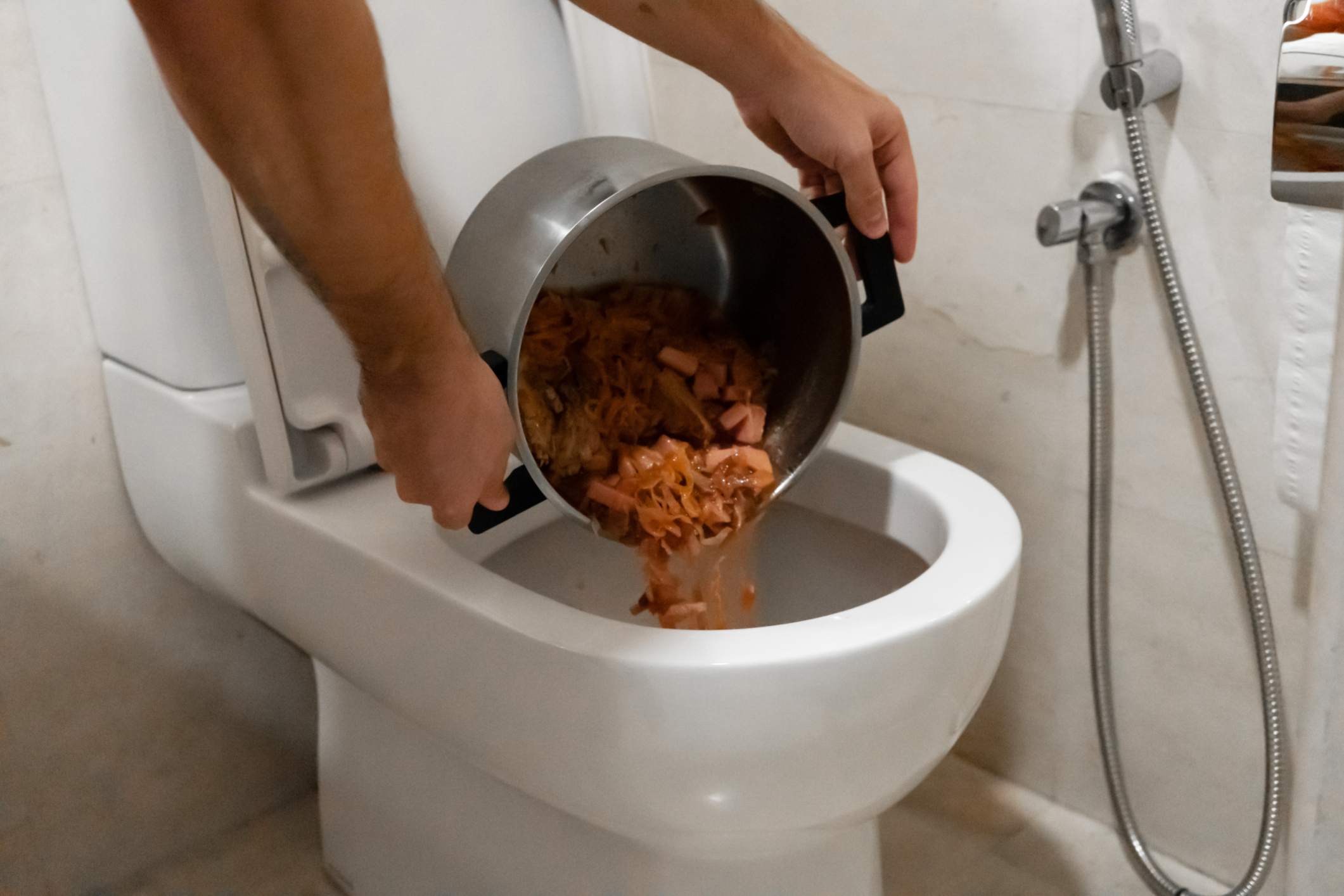Can One to Flush Food in the Toilet?
Can One to Flush Food in the Toilet?
Blog Article
Just about every person seems to have his or her own perception about Think Twice Before Flushing Food Down Your Toilet.

Intro
Many people are frequently confronted with the predicament of what to do with food waste, especially when it pertains to leftovers or scraps. One common concern that arises is whether it's all right to flush food down the toilet. In this article, we'll look into the reasons that people could take into consideration purging food, the effects of doing so, and different methods for proper disposal.
Reasons why people could consider purging food
Lack of recognition
Some people may not know the prospective harm caused by purging food down the toilet. They might incorrectly believe that it's a harmless technique.
Ease
Purging food down the bathroom might feel like a fast and easy remedy to dealing with undesirable scraps, particularly when there's no neighboring trash bin available.
Laziness
In some cases, people might simply choose to flush food out of sheer laziness, without considering the effects of their actions.
Consequences of flushing food down the toilet
Ecological influence
Food waste that winds up in waterways can add to air pollution and injury aquatic communities. In addition, the water utilized to flush food can strain water resources.
Pipes issues
Purging food can cause blocked pipes and drains pipes, creating costly plumbing fixings and inconveniences.
Sorts of food that must not be flushed
Fibrous foods
Foods with coarse structures such as celery or corn husks can get tangled in pipelines and trigger blockages.
Starchy foods
Starchy foods like pasta and rice can soak up water and swell, resulting in clogs in pipes.
Oils and fats
Greasy foods like bacon or food preparation oils ought to never ever be flushed down the toilet as they can strengthen and trigger blockages.
Appropriate disposal techniques for food waste
Making use of a waste disposal unit
For homes outfitted with garbage disposals, food scraps can be ground up and purged via the pipes system. Nonetheless, not all foods are suitable for disposal in this way.
Recycling
Particular food product packaging materials can be reused, decreasing waste and decreasing ecological impact.
Composting
Composting is an environmentally friendly method to get rid of food waste. Organic materials can be composted and utilized to enhance dirt for gardening.
The significance of proper waste monitoring
Lowering environmental injury
Appropriate waste monitoring practices, such as composting and recycling, assistance minimize pollution and maintain natural deposits for future generations.
Shielding plumbing systems
By avoiding the technique of flushing food down the bathroom, property owners can avoid expensive pipes fixings and preserve the honesty of their pipes systems.
Final thought
In conclusion, while it might be alluring to flush food down the bathroom for convenience, it is very important to understand the possible effects of this action. By taking on correct waste monitoring techniques and getting rid of food waste responsibly, people can contribute to much healthier plumbing systems and a cleaner setting for all.
THINK TWICE BEFORE FLUSHING FOOD DOWN YOUR TOILET IN FALLBROOK CA
Let’s be honest, we’re really supposed to be tossing rotten or leftover food in the compost bin or trash can. But many people like to place scraps of food down the drain of, say, their kitchen sink. That’s why the garbage disposal was invented: so we can continue to place certain foods down the drain without clogging our drain in the process. Smart.
But not all of us have the luxury of having a garbage disposal installed. So, you might continue to shove food down your sink drain anyway – or worse: you might flush them down your toilet! If you’re guilty of doing the latter, you’re going to want to stop, and here’s why:
Toilet Drains Aren’t Designed to Handle Food!
There’s your answer: food just doesn’t belong in your toilet. It may seem like your toilet drain is wider than the drains of your sinks, but truth be told, that isn’t actually the case. The narrower pipes of your toilet leave your plumbing at risk for clogging if you do happen to flush your food. In addition, food doesn’t break down as quickly that toilet paper and human waste do. In turn, this leaves your toilet at risk for a nasty clog.
Although a flush of a tiny pinch of food every now and then isn’t going to completely damage your toilet, there are certain foods that should absolutely not be flushed in your toilet at all. These include starchy foods like mashed potatoes, grains, hard pieces of food that are slow to break down, and fats and oils.
The latter categories of food are particularly problematic as they may harden, expand as they absorb water, break down slowly in your system, or generally create the perfect obstruction with their gelatinous composition. These are all things you don’t want in your plumbing system!
Experiencing a Toilet Clog?
Nobody’s perfect, and we all make mistakes. Sometimes one of the mistakes people make is flushing food down their toilet and later realizing that it wasn’t the best thing to do once they see that their toilet is now clogged. Uh-oh!

As a devoted reader on Is it safe to flush food (especially rice) down the toilet?, I assumed sharing that portion was really useful. Sharing is good. Helping people is fun. I enjoy your readership.
Schedule Today Report this page